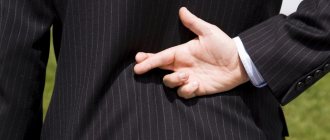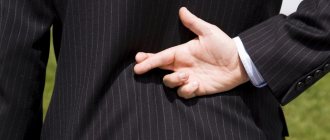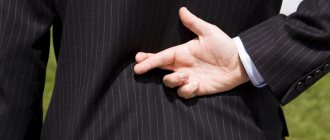What is this in psychology?
The famous psychologist and scientist A. Maslow argued that expressiveness is a manifestation of the normal functioning of the human psyche, since it expresses its attitude, capable of being noticed by other people.
Expressiveness is a special form of contact and communication with other individuals, being a powerful signal of a person’s expression of opinion or attitude.
To express expressiveness, a person can use different techniques and methods: from behavior style to clothing style. Appearance can already indicate the severity of this possibility in an individual.
Many people deliberately hide their attitude to what is happening and dampen their expressiveness, thereby forming an internal conflict.
Others, on the contrary, are prone to unlimited expression, which can also contribute to the discomfort of both the person himself and those around him. Expressiveness as a psychological concept is reflected at all levels of the human psyche : behavior, habits, reactions, psychological syndromes.
Analyst type
Average number of contacts to complete a transaction: 5-7
They speak quietly. Slow in movements. Constantly thinking about things to do at work. They prefer the best value for money. They wear functional clothes and choose a car according to the same principle.
These are good administrators, this type is often found among accountants and financial directors, representatives of the engineering and architectural professions.
Features of negotiations:
The fear of loss outweighs the desire to benefit from the purchase. It is important to “ignite” them, to clearly demonstrate values or benefits.
They are skeptical and require demonstration of evidence, asking a large number of questions. According to my observations, it is easier to lure clients with such qualities from existing competing suppliers: even after the transaction is completed, they continue to monitor the market in search of more optimal offers.
Photo from sellsolutions.ru
Types of expressiveness
Expressiveness can be divided into the following options:
- Motor : reflects a physical, muscular reaction. Russian physiologists I. M. Sechenov and I. P. Pavlov studied the severity of reflex activity and the degree of motor activity in response to various stimuli. Motor reactions expressed the degree of severity of the reaction.
- Emotional : describes a subjective attitude to what is happening; expressiveness can manifest itself both in positive emotions in the form of joy or delight, as well as in negative ones: anger, crying.
- Behavioral : expresses the characteristics of human behavior depending on the level of expressiveness. At the same time, it is a higher level in relation to the previous ones. Behavioral expressiveness is manifested in the severity of reactions assessed by others.
At the junction of the first two types are speech and facial expressiveness, which is realized with the help of characteristic speech patterns and the work of facial muscles in the form of certain “masks” - sets of microexpressions.
Type "steering"
Average number of contacts to complete a transaction: 1-2.
Demanding, decisive and independent. Strives to be the master of the situation. Prefers things that emphasize his importance. For example, in the office of such a client there may be a large table with a massive chair. “The Helmsman” loves to wear expensive accessories and status clothes, and will strive to drive large cars of famous brands.
In his career he wants to occupy a leadership position.
Features of negotiations:
Guided by the principle “I needed this yesterday.” The decision to make a purchase or transaction is made quickly. During negotiations, I advise you to clearly outline these parameters:
- work order;
- deadlines;
- transaction guarantees;
- result.
Causes
There are several reasons for this phenomenon:
- anatomical-functional or biological;
- genetic;
- socially determined;
- historical.
Biological reasons form the material basis for the ability to clearly express one’s “I.”
This includes neurotransmitter systems, metabolic features, and constitution.
Adrenaline and norepinephrine are responsible for the severity and speed of the reaction, the ability to euphoria is due to the presence of endorphins, serotonin and dopamine.
Depending on the activity of these systems, as well as on the speed of inactivation of products, characteristic behavioral features .
A special structure of the brain called the limbic system is responsible for the emotional sphere. With its active work and stimulation, emotional and motor activity increases.
In depressive states, when there is a marked decrease in expressiveness, a deficiency of serotonin is observed, which is what therapy is aimed at. However, this does not mean that only biology governs behavior.
Genetic reasons predetermine the structure of the body, and accordingly its anatomical and physiological characteristics, as mentioned above.
Genes contain information about the so-called reaction norm for a given person - the boundaries within which the implementation of a particular function is possible, in particular the expressiveness of emotions, movements, and behavior. However, this may change during life.
Based on anatomy and genetics, a temperament is formed, which is characterized by a certain degree of expression for each type : sanguine and choleric people will have a pronounced reaction, but phlegmatic people, and especially melancholic people, on the contrary.
It is possible to correct your temperament, but this is an innate predisposition that is realized in appropriate conditions.
Socially determined reasons play the largest role in the formation of expression. This includes:
- family education;
- communication in the school community, in educational institutions;
- working team;
- chat with friends;
- forced communication (with service sector workers).
Social connections leave their mark , stimulating or weakening personality expression. In the family, such reactions may be limited; even more restrictions occur in work and educational groups.
Also, the formation of this process is greatly influenced by the self-determination of the individual in the team and his self-esteem. Confident people tend to have a bright temperament and expression, but this is also not an absolute rule.
Historical reasons shape national traits and characteristics. Italians and Spaniards are considered one of the most expressive nations. Representatives of these nations tend to speak loudly, actively gesticulate and express themselves.
The same trend can be seen in folk culture and folklore: rhythmic, clear and captivating motifs, colorful outfits.
National customs and historical circumstances leave a significant imprint on the formation of expressiveness in an individual.
An expressive person - who is he?
An expressive person rarely goes unnoticed. His appearance and behavior usually speak before the dialogue with him.
Characteristic features of such a personality:
- Fast, sweeping movements with large amplitude.
- A large number of small movements accompanying gait or speech, active articulation and gestures.
- Jerky, abrupt nature of movements.
- An abundance of words in the dialogue, a loud voice, laughter that attracts attention.
- Lively facial expressions, easily interpretable.
- Mannered behavior, pretentiousness.
- The real or fabricated role of the leader, the “ringleader”.
The fabricated role of a leader means that a person is ready to accept all the attention and all the rights of a leader, but is not ready to bear responsibility.
An expressive person does not always mean confident or dominant . It often happens the other way around: with outwardly bright behavior there is a lack of willpower and self-control.
Such people often make a lot of promises, make a lot of plans, and also like to express their opinions in public.
Expressive girls often attract attention with their atypical persistence in expressing themselves or responding to communication.
They are often the center of men's attention, but have difficulty building relationships due to lack of restraint. Also, expressive ladies are characterized by lability of emotional reactions and a tendency to hysteria .
The first sign of female expression is appearance: bold combinations of colors and models predominate, often absurd, but lively facial expressions and visible optimism successfully compensate for such inconsistencies.
Characteristics of behavior
With this model of behavior, actions that attract attention predominate: such people tend to be the center of everyone's attention.
They often become successful actors, singers, and musicians. Expressive behavior is characteristic of a creative environment .
Also in this behavior there is often a duality of standards: confident in public, such people are indecisive in their real actions, often trying to shift responsibility to someone else.
Expressive behavior is often associated with directness and honesty, but with the right skill, behavioral reactions can skillfully simulate something. Behavior is characterized by a constant dynamic desire: from the speed of movements to the speed of decision-making.
Speech is dominated by affirmative sentences and exclamations , both positive and negative. Sentences are constructed from complex constructions, characterized by an abundance of interjections, prepositions, and adverbs.
There are usually traces of facial wrinkles on the face, especially around the eyes, rapid movement of the eyes and lips, and a constantly changing facial expression.
A striking example of an expressive personality is the hero of Russian folk tales, Ivanushka the Fool .
His sweeping movements, elastic gait, fast and bright speech, as well as his image in eye-catching clothing colors with an expressive smile on his face allow us to create a portrait of an expressive person.
Expressive crowd concept
Such a crowd of people is formed against a general excited background : all members of this crowd are in high spirits and, as a rule, ready for action, but they do not perform any action.
An expressive crowd has no goal, but has great energy potential; individuals are united by the similarity of their state and readiness to express it.
Such a crowd usually has a leader, but this does not always give purpose to the crowd of people.
A striking example of an expressive crowd can be seen at football matches or carnival processions.
In some cases, such a crowd poses a danger because it has no means of control or direction and is subject to the chaotic influence of an excited mood.
Expression and emotions
Emotions enable a person to express his attitude towards the environment and himself. The emotional center is located in the subcortical zone of the brain and its task is to provide a connection between emotional states and their physiological manifestations.
When a person experiences strong emotions, changes are observed in a number of body systems:
- digestive;
- hormonal;
- cardiovascular.
These changes can be visually noticeable to others and reflect what feelings and moods a person is experiencing directly at the moment. So, for example, when scared, some people may turn pale, and when embarrassed, they may blush. Fingers may tremble from excitement and sweat may appear on the forehead.
The most striking expressive emotions include laughter and crying.
Such manifestations of expressive emotions are observed not only in humans, but are also characteristic of animals. For example, cats, when danger approaches, bend in an arc, the hair on their body rises, dogs can growl and bare their teeth.
However, in humans, expression is undoubtedly more pronounced and is not limited to the manifestations of reflex reactions alone.











